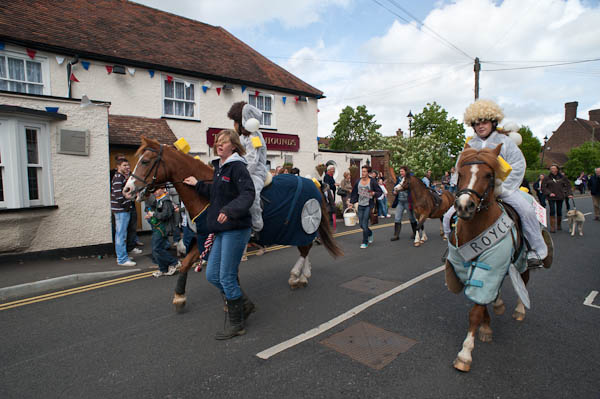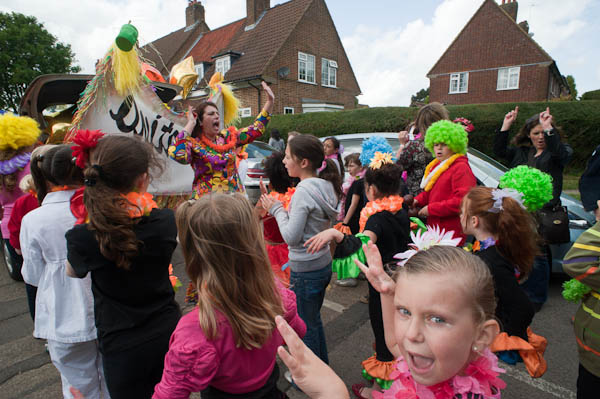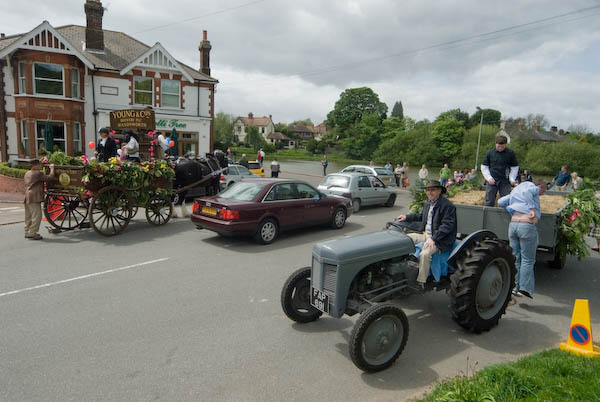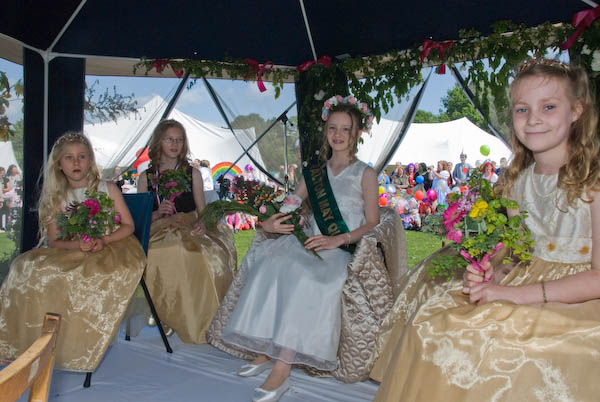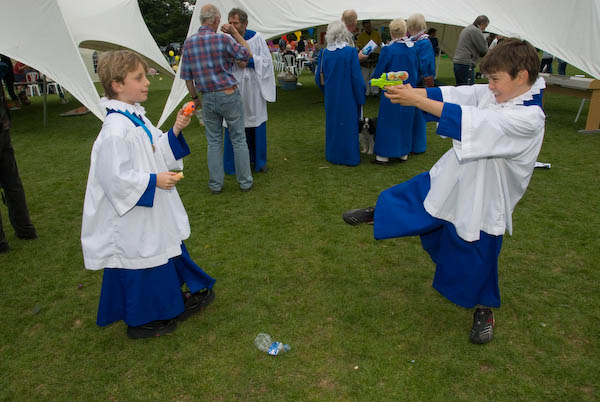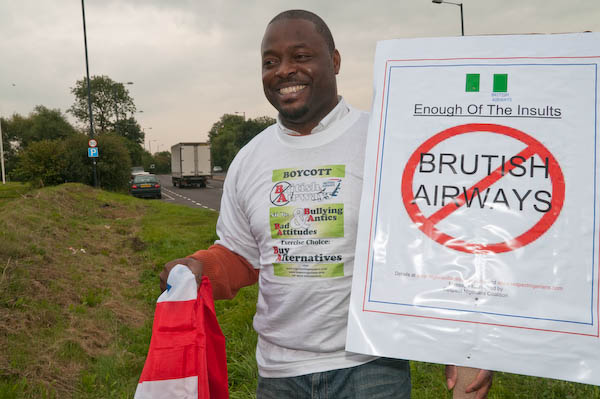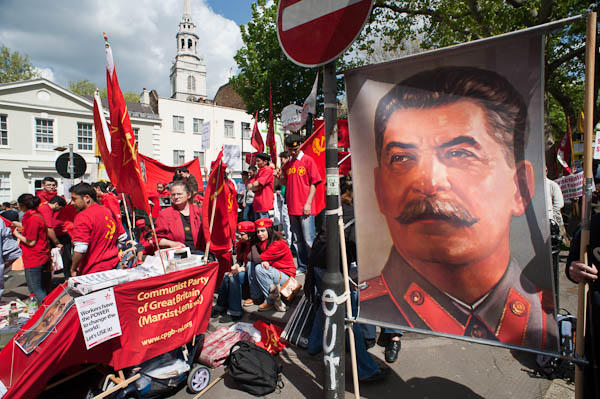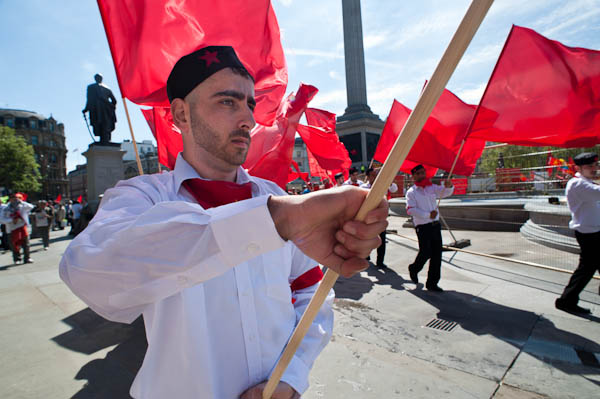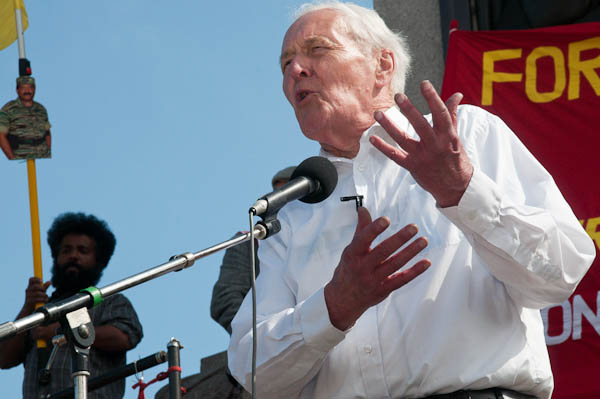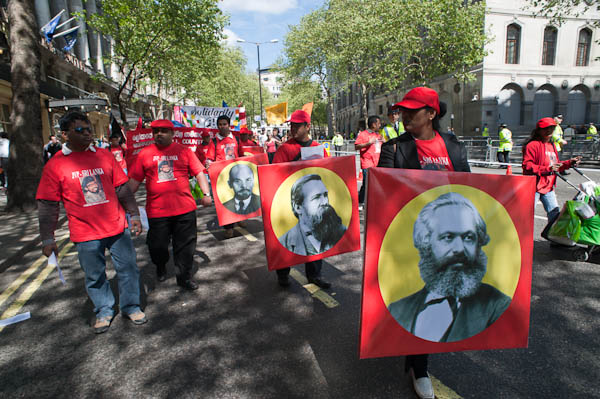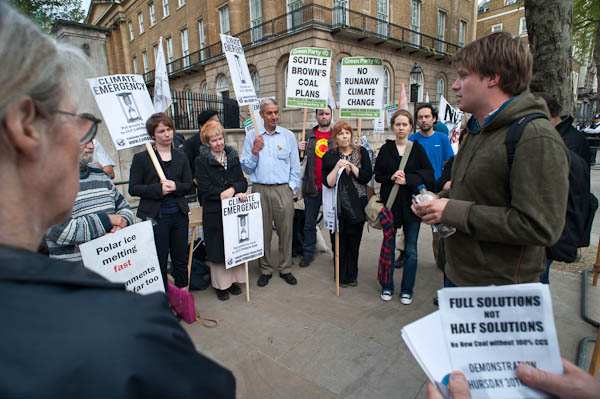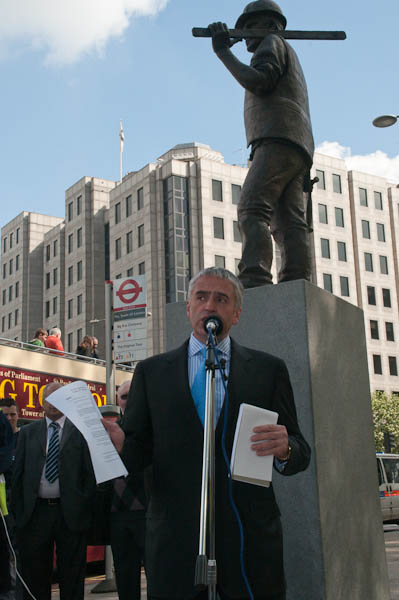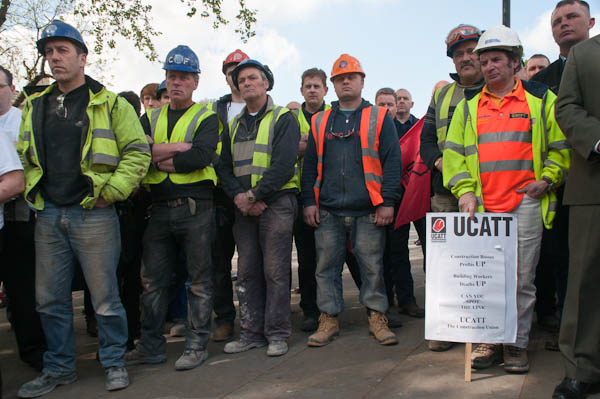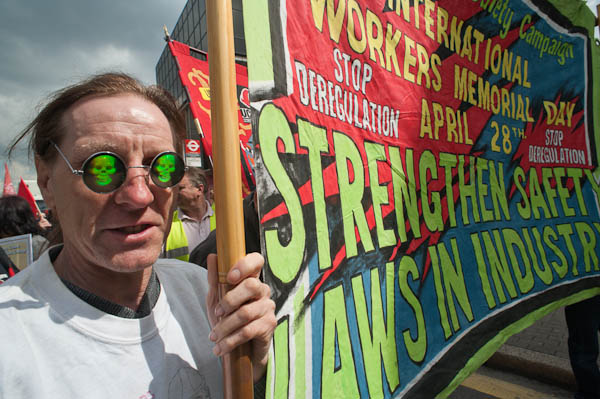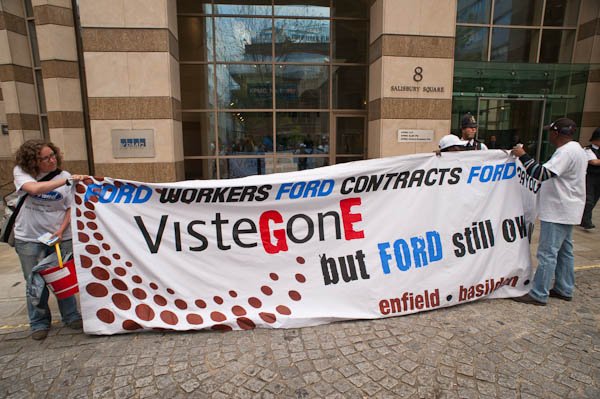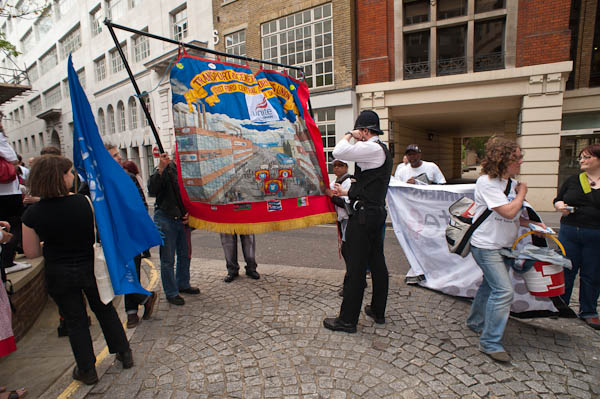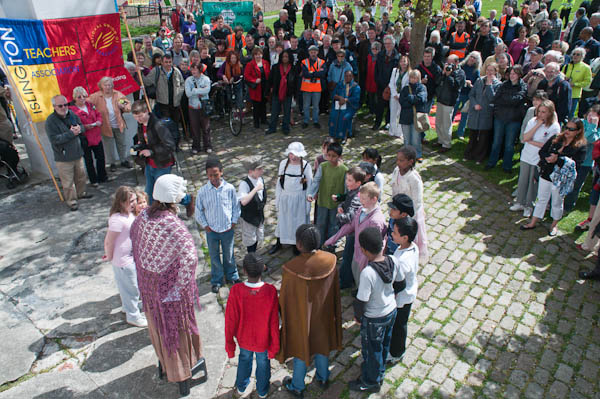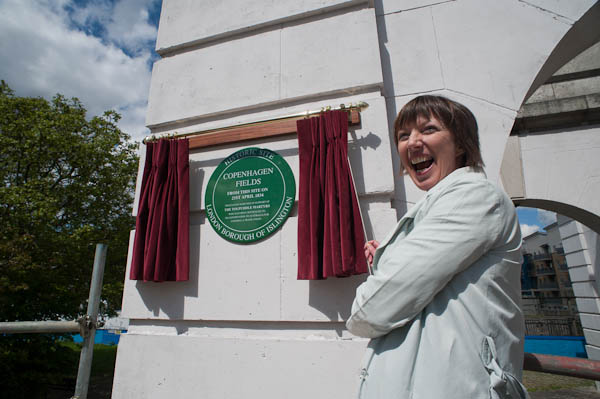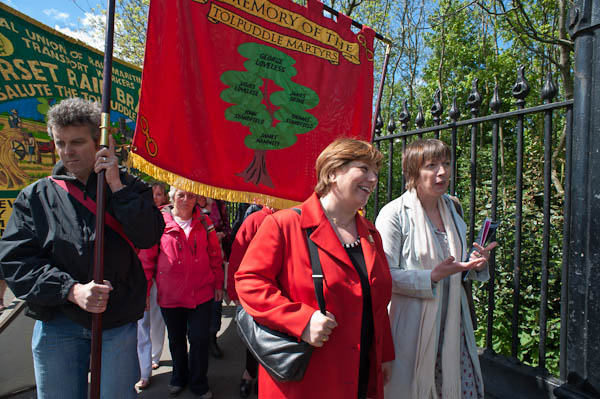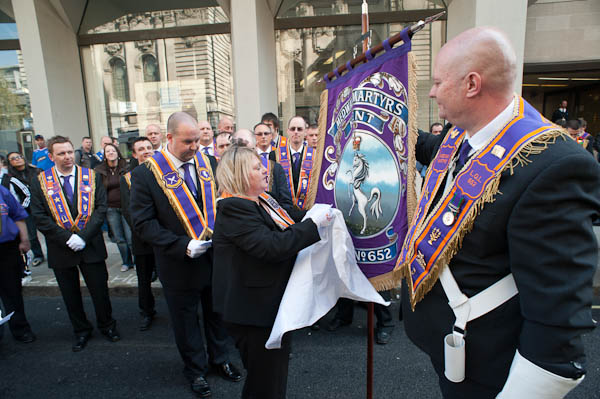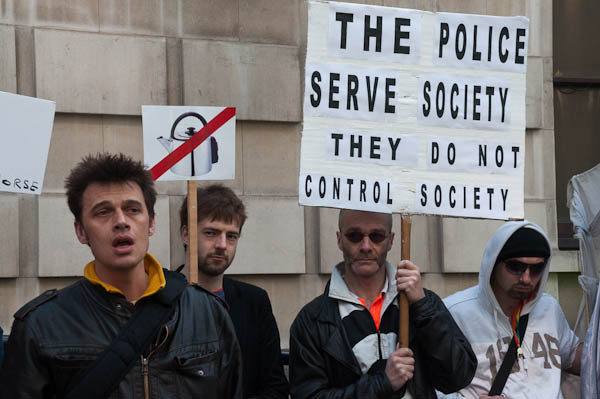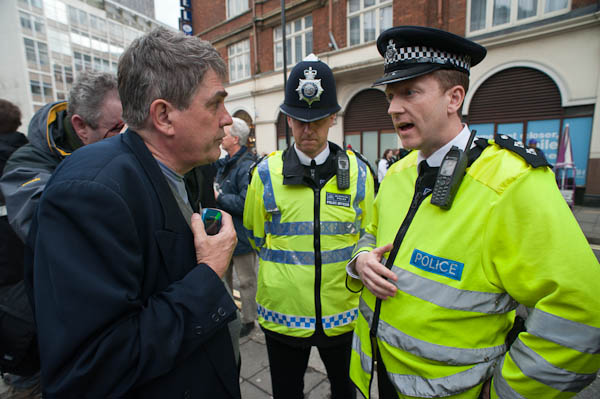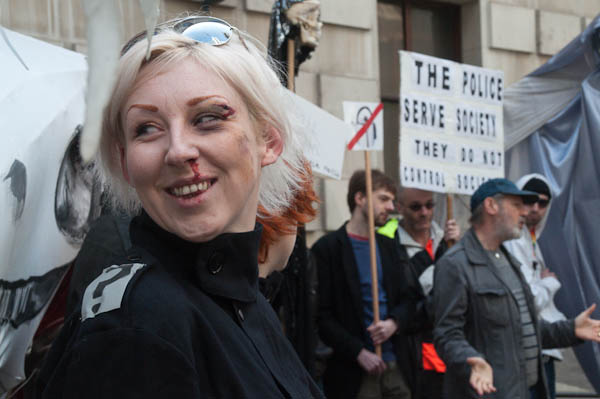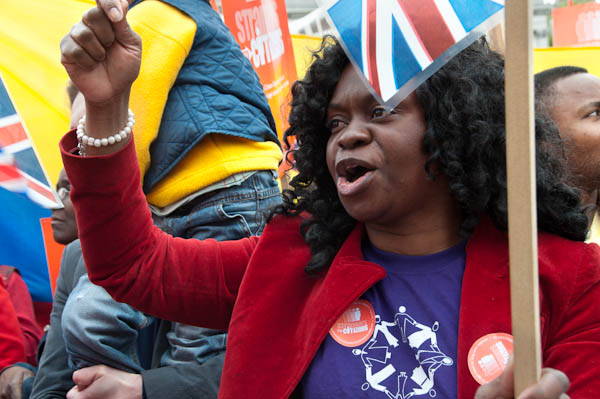
A packed Trafalgar Square all waving Union Jacks and singing ‘God Save the Queen’ is not my idea of a demonstration, and I turned to the photographer next to me and suggested we compete with a rendition of the ‘Internationale‘ (which later he told me he had as a ringtone.) But ‘Strangers into Citizens‘ is not a typical demonstration and most of the tens of thousands there had started the event in one of seven crowded religious services around the capital, though I’d passed on that and joined the several thousand mainly Latin Americans halfway through their march from the Elephant outside Lambeth North tube.
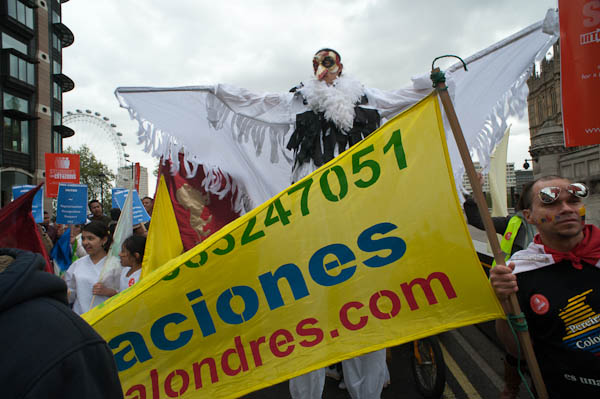
Perhaps 90% of the crowd filling the square were migrants (or the children of migrants) with representatives from almost every country around the world. Although the march had been lively, the rally was a little turgid at times, with speaker after speaker representing so many different interests – religions, political parties, trades unions, ethnic groups and more – who have all backed this initiative. But it ended with quite a bang, a short but fiery set from Asian Dub Foundation, Bangladeshi drummers and some very lively African dancers.
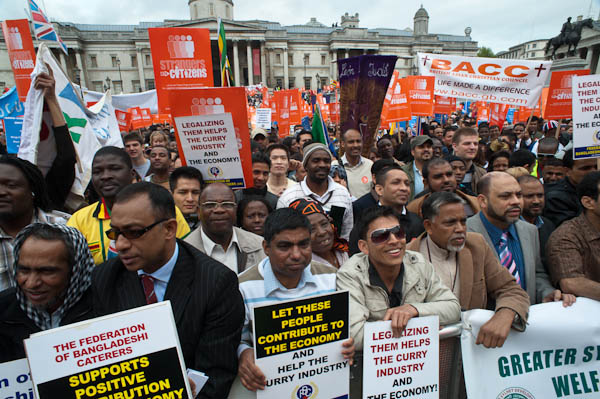
‘Strangers into Citizens’ is organised by London Citizens, a new type of popular movement for justice for the poor in our society, combining trade unions with churches and other groups and pressing for improvements in pay and conditions for the lowest paid workers – who include many migrants.
Strangers into Citizens calls for a pathway to give long term irregular migrants a right to earn indefinite leave to stay in this country. Current best estimates are that around 725,000 people are currently living in the UK without a documented right to remain. They include asylum seekers whose cases have not been determined or who have been refused but have not been removed and those who have stayed on after temporary visas or permission to stay has expired.
Many of them are working and paying taxes; some are exploited by employers who take advantage of their status to pay wages below the legal minimum and to avoid making proper insurance contributions. Many could make a much greater contribution to our economy if they were able to make proper use of their qualifications.
Strangers into Citizens propose that those who have been here for more than four years should be elegible for a two-year work permit. At the end of this they should, “subject to criteria such as an English language test, a clean criminal record and valid references from an employer and community sponsor” be granted indefinite leave to remain.
These people are with us, many taking a valuable and active part in the communities in which they live. An amnesty for them makes sense on moral, religious, practical and economic grounds – at current removal rates it would take over 30 years and cost around £8bn to forcibly remove them, and they make a positive contribution to our economy.
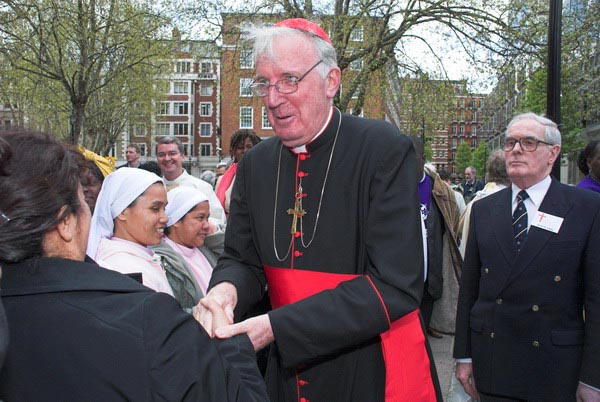
I photographed the rally at which Cardinal Cormac Murphy O’Connor launched Strangers in Citizens three years ago in May 2006, as well as later demonstrations, and it has wide suport from churches as well as Jewish and Muslim organisations and the key NGOs in the area. The campaign, led by ‘London Citizens’ has the support of members in all the main political parties – and people from them spoke at the rally. The Mayor of London, Boris Johnson has also supported it and the Liberal Democrats have adopted it as party policy. Like Green MEP Jean Lambert, one of the speakers at today’s rally, the problem I have with it is that it does not go far enough. Although it might cover 450,000 of those living here without documents, it would still leave some 300,000, many of whom also have a very good case for the regularisation of their position. And although the campaign stresses that this would be a ‘one-off’ amnesty, I see a clear need for a continuing policy to allow those who contribute to the country to attain legal status.
One point made very strongly at the rally was the need to challenge the use of such terms as “illegal immigrant”, a derogatory and inaccurate term used to stigmatise migrant workers and to justify increasingly draconian action against them. People are not illegal, although most of us at times break laws – it is hard not to. Those in this country without proper papers are in general more law-abiding than the rest of the population as it is in their interest not to attract the attention of the authorities. Most want nothing more than to lead a normal life and contribute to the society in which they are living. The French have a rather better term, “sans-papiers”, those without papers, the “undocumented.”
Forced removal of all those without permission to remain – as demanded by the racists – would be extremely expensive, costing around £8 billion, and with the current resources for enforcement would take over 30 years. Trying to speed it up would be even more expensive. Whatever views people hold on immigration we need a policy that recognises the scale of the situation and takes sensible action. In my view it is also wrong to call it a “problem” – the real problem for us would be if these people were no longer here to do the jobs that nobody else wants to do.
